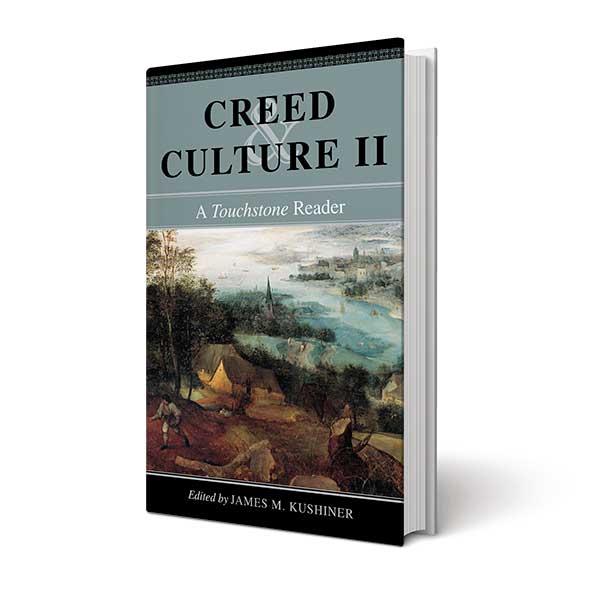Dark Shadows of Turning
Eric Scheske on Evil in Legend & Life
From sixteenth-century Germany comes the terrible tale of Stubbe Peeter. Stubbe grew up in the area of Collin, Germany, seemingly well-known to his fellow citizens. He often strolled about Collin and neighboring villages, attractively dressed, greeting acquaintances he met on the streets.
But Stubbe Peeter was an evil man, inclined to evil from his youth. The devil became well pleased with his young disciple, so he gave him an inconspicuous belt with which Stubbe Peeter could transform himself into a wolf. For twenty-five years, werewolf Stubbe Peeter committed terrible atrocities: slaughtering and eating animals raw; killing and eating small children; tearing children from their mothers’ wombs and eating their hearts raw; killing his own son and eating his brains; raping women; and committing incest with his daughter—monstrous acts that seem unbelievable until one recalls the fiendish deeds of those such as Jeffrey Dahlmer and other serial killers, ritual child abusers, and similar criminals of our own day.
Finally, hunters and their dogs successfully tracked the ravenous wolf and cornered him. Seeing himself surrounded, Stubbe Peeter removed the belt and resumed human shape right in front of them, hoping the hunters would not be able to believe their eyes. But they believed what they saw, and so apprehended him and took him to the magistrates for examination. After Peeter confessed his crimes, his executioners laid him on a wheel, pulled his flesh from his bones with red-hot pincers, broke his arms and legs with a hatchet, and then decapitated and burned him.1
We don’t know precisely where fact and fiction cross in Stubbe Peeter’s story. While it is obviously unlikely that he really was a werewolf, he could have been one of the criminally insane about whom grew a legend that reflected the surrounding culture (sixteenth-century Europeans greatly feared the wolf). But even if only a legend, the depiction of Stubbe Peeter as a “shapeshifter”—one who walked among his fellow villagers as a man but changed into a ravenous animal to perpetrate his crimes—is more than a reflection of sixteenth-century fears; it also contains a universal truth. For the shapeshifting that made Stubbe Peeter notorious in his day is a consistent feature of evil in all times: Evil things shift shapes.
Shapeshifting in Lore & Literature
This is a constant theme in folklore. For instance, almost every culture has its fearsome stories about were-beasts. In Asia, there are tales of the fearful were-tiger; in Africa, stories of the man who shifted shapes into a lion or hyena. Lore in the Amazon region tells of the jaguar-men—sorcerers who became jaguars at night in order to attack humans.
Shapeshifting has also been associated with witchcraft. During the Middle Ages, witchcraft was commonly suspected when an attacking animal was wounded at night and a woman then was discovered the following morning with wounds to the corresponding parts of her body. Such evidence was deemed convincing against a medieval woman named Finicella. She was convicted of using witchcraft to take the form of a cat and attack a small child after exhibiting a stab wound corresponding to that inflicted on a cat by the child’s father on the night of the attack. Between 1395 and 1405, a secular court near Bern burned many people for witchcraft. Among other crimes, the witches were accused of stealing children, draining their body fluids to make ointments, and using the ointments to change themselves into animals.2
Shapeshifting is also a feature of mythology. For example, every Viking knew of the shapeshifting Norse god Loki (the “Trickster”), a god who, after vacillating for some time between good and evil, eventually succumbed wholly to evil and became hateful of everything. According to myth, the goddess Frigg doted on her beautiful son Balder and sought to assure his immortality by seeking, and securing, from every substance on earth but one, a promise not to hurt him. Loki changed into a tiresome old woman and so pestered Frigg with questions that finally, at the end of her patience, she revealed her secret: she had failed to get a promise from the mistletoe.
The gods, meanwhile, would get harmless fun out of throwing deadly things at the seemingly invincible Balder, and Balder’s blind brother Hod joined in the sport. Loki made a dart from the mistletoe and gave it to Hod, who threw it at his brother. The dart pierced and killed Balder.
Loki’s spiteful cruelty did not end there. When the goddess Hel agreed to permit Balder to return from the dead on condition that every creature on earth weep for him, Loki turned himself into a giantess named Thokk, who refused to cry. When the gods heard of Loki’s further outrage, they hunted him. He turned into a salmon to try to escape, but was captured and bound to a rock with his own son’s entrails. He now awaits Ragnarok, the day of the last great conflict between good and evil, when he will be unbound to fight on the side of evil.
Share this article with non-subscribers:
https://www.touchstonemag.com/archives/article.php?id=12-02-011-v&readcode=991
subscription options
Order
Print/Online Subscription

Get six issues (one year) of Touchstone PLUS full online access including pdf downloads for only $39.95. That's only $3.34 per month!
Order
Online Only
Subscription

Get a one-year full-access subscription to the Touchstone online archives for only $19.95. That's only $1.66 per month!
bulk subscriptions
Order Touchstone subscriptions in bulk and save $10 per sub! Each subscription includes 6 issues of Touchstone plus full online access to touchstonemag.com—including archives, videos, and pdf downloads of recent issues for only $29.95 each! Great for churches or study groups.
Transactions will be processed on a secure server.
more from the online archives
calling all readers
Please Donate
"There are magazines worth reading but few worth saving . . . Touchstone is just such a magazine."
—Alice von Hildebrand
"Here we do not concede one square millimeter of territory to falsehood, folly, contemporary sentimentality, or fashion. We speak the truth, and let God be our judge. . . . Touchstone is the one committedly Christian conservative journal."
—Anthony Esolen, Touchstone senior editor










